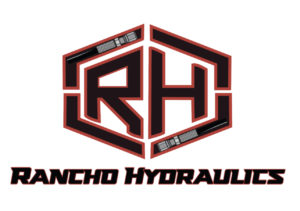Introduction:
Hydraulic systems are integral to numerous industrial applications, from manufacturing to construction. However, even a minor leak in these systems can lead to significant losses in efficiency, productivity, and potentially even safety hazards. Ensuring a leak-free hydraulic system is paramount for smooth operations and prolonged equipment lifespan. In this guide, we’ll outline 14 essential steps to achieve this goal.
Understanding Hydraulic Systems and Common Leak Points
Before delving into prevention methods, it’s crucial to understand how hydraulic systems operate and where leaks commonly occur. Hydraulic systems rely on pressurized fluid to transmit power. Common areas prone to leaks include fittings, seals, hoses, and connections.
14 Steps for Leak Prevention
- Regular Inspections: Implement a routine inspection schedule to identify potential leaks early on. Check all components for signs of wear, corrosion, or damage.
- Use Quality Components: Invest in high-quality hoses, fittings, seals, and connectors. Inferior components are more prone to failure and leakage.
- Proper Installation: Ensure proper installation of all hydraulic components according to manufacturer guidelines. Use appropriate torque settings and techniques to prevent leaks at connections.
- Correct Fluid Selection: Use the recommended hydraulic fluid for your system. Using the wrong type of fluid can lead to seal degradation and leaks.
- Maintain Optimal Fluid Levels: Monitor fluid levels regularly and top up as needed. Low fluid levels can cause cavitation, leading to system damage and leaks.
- Pressure Regulation: Keep hydraulic system pressures within recommended limits. Excessive pressure can cause seals to fail and result in leaks.
- Temperature Control: Maintain proper operating temperatures to prevent fluid thinning or thickening, which can compromise seal integrity.
- Filter Maintenance: Regularly inspect and replace hydraulic filters to prevent contamination. Contaminants can damage seals and other components, leading to leaks.
- Seal Inspection and Replacement: Check all seals for signs of wear, cracking, or degradation. Replace seals at the first sign of damage to prevent leaks.
- Tighten Loose Connections: Periodically check and tighten any loose connections in the hydraulic system. Even small leaks can lead to significant fluid loss over time.
- Use Thread Sealants: Apply thread sealants to hydraulic fittings to ensure a tight seal and prevent leaks.
- Implement Leak Detection Systems: Install leak detection systems to quickly identify and address any leaks that do occur, minimizing downtime and damage.
- Employee Training: Provide comprehensive training to employees on proper hydraulic system maintenance and leak prevention techniques.
- Documentation and Record-Keeping: Keep detailed records of maintenance activities, inspections, and repairs. This information can help identify trends and potential areas for improvement in leak prevention efforts.
Conclusion:
A leak-free hydraulic system is essential for efficient and reliable operation in industrial settings. By following these 14 steps for leak prevention, you can minimize downtime, reduce maintenance costs, and prolong the lifespan of your hydraulic equipment. Regular inspections, quality components, proper maintenance, and employee training are key components of a successful leak prevention strategy. With diligence and attention to detail, you can keep your hydraulic system running smoothly for years to come.
